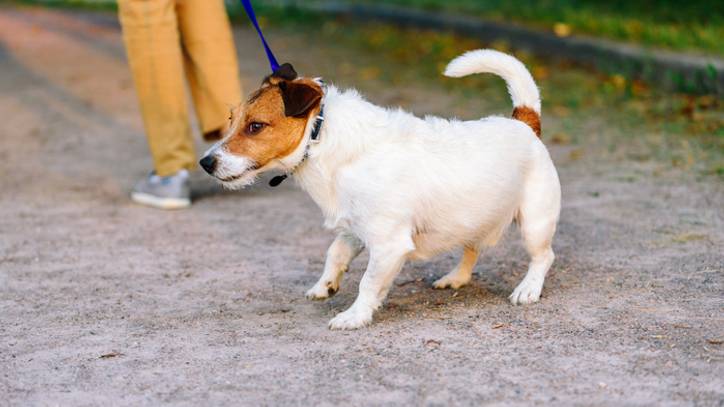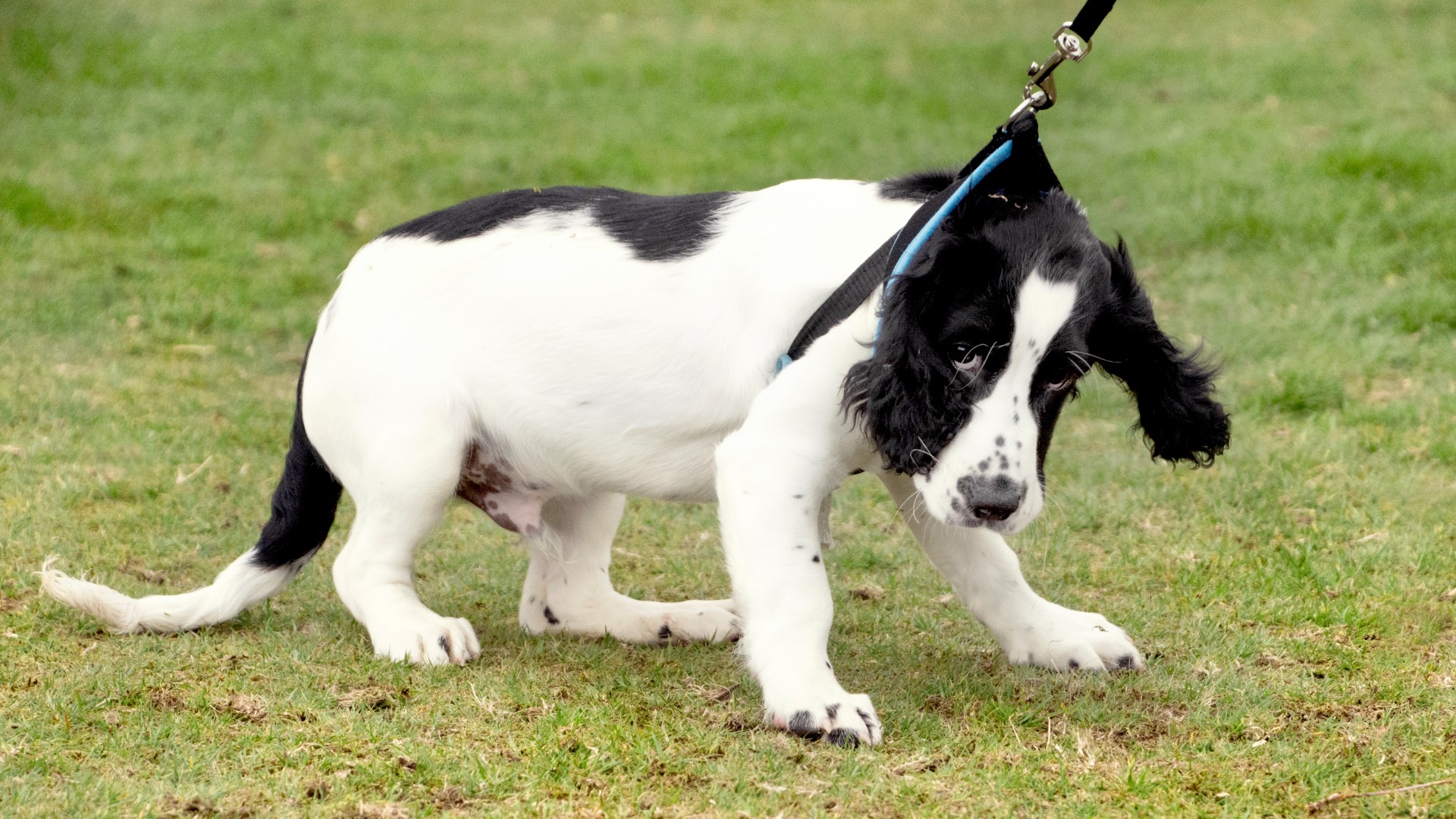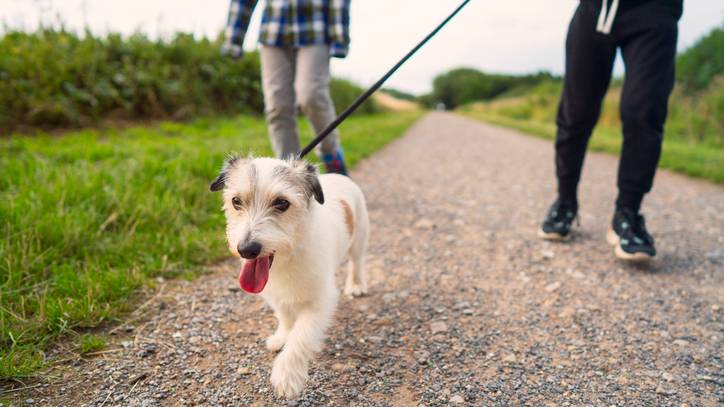What to do when your dog refuses to walk
If your dog refuses to walk, don't fret, we have some tips for you

So, you're on a stroll and your dog refuses to walk. Stops dead in its tracks, plants all four paws, and leans back against your pulling. Obstinate, determined, stronger than ever in its stubbornness. What's going on? What do you do?
First, you'll want to make sure you have a high quality and comfortable dog harness or a strong dog leash to ensure your pooch doesn't slip out and run away. Second, you'll want to take a deep breath, as getting frustrated won't help the situation.
Your dog could be refusing to walk for a few reasons, and it's important that you get down to the bottom of it. Is it fear-based? Persistent stubbornness? Is their leash or harness uncomfortable?
We'll cover all the reasons why your dog refuses to walk below, along with some tips and tricks on how to combat puppy immobility. Walking is an important part of your dog's health regimen, so you'll want to get this sorted out ASAP. We're here to help.
- How to walk a puppy on a leash
- How to stop a dog from pulling on a leash
- How to stop your dog chewing their bed
Why your dog refuses to walk
There are a few reasons why your dog suddenly refuses to walk – and it's not because they've suddenly forgotten how to. Figuring out why your dog refuses to walk is the first step to getting them moving again, so here are a few possible reasons why your pooch has suddenly frozen in place.
1. They are scared
Your dog could be frozen in place on the sidewalk or on the trails because they see or hear something that scares them. This could be a bike, a skateboard, a stroller, or other obstacles along the way – maybe even another dog. They could even be scared of plastic bags or other things blowing about in the wind.
This is a common behavior in unsocialized puppies or in newly adopted rescue dogs who are unaccustomed to the sights and sounds outside of the shelter, though it may also happen if you've recently moved your dog to a new area.

2. They are uncomfortable
Ensuring that you have a harness or leash that fits your dog properly is of the utmost importance. If it's pinching under their legs or is too tight, this could severely limit their mobility or cause pain while on a walk – neither of which you want for your pup.
If you've bought sweaters or other weather-related gear, make sure those fit as well. Your best bet is to let your dog get used to their harness, leash, or attire indoors, so you can see if there's anything bothering them and help them get comfortable with their new gear.
3. They are in pain
Your dog could be suffering from knee or hip pain, or could perhaps have stepped on something that injured its paw. Keep an eye out for signs of physical discomfort such as limping, favoring a specific foot, panting, or whining – and make sure to take your dog to see a vet if you suspect something is up. Perhaps you're questioning, 'Why is my dog walking sideways?'

4. They stubbornly don't want to go
Maybe you're at the dog park or your dog hasn't been on a long walk in a while – or maybe they know a bath is awaiting them at home. If your dog is refusing to walk and is otherwise happy and healthy, this may be a sign of a stubborn streak brewing. If that's the case, you may want to work on your dog's recall skills or keep some extra-delicious treats in your pocket.
Should I force my dog to walk if he doesn't want to?
Don't drag a dog that won't walk with you. This could be dangerous for them and, if they are already suffering from an injury, potentially injure them further.
If they aren't moving out of fear or stubbornness, dragging them along could cause an injury and will also cause them emotional distress. The only time you should drag or tug your dog is if it's in imminent danger, such as when it may get hit by a car or fall off a ledge.
Pause and take a moment to gather yourself. If you wait patiently and your dog eventually starts moving, reward them with a treat or a reassuring word. It may take longer to get home than you'd like, but you'll get there.
Worst case scenario: if your dog is small enough to be comfortably picked up and you're short on time, you can scoop them up and carry them home – but you shouldn't rely on doing this.
If your dog is scared of something, dragging them past it won't help them get over it – if you suspect they're scared of something they encounter on walks, talk to a behaviorist.

What to do when your dog refuses to walk
Don't worry, you can handle this. There are several things you can do to help make walking easier if your dog refuses to walk:
1. Make sure their leash or attire is comfortable
As mentioned above, make sure that your dog's leash or harness isn't pinching or limiting their movement in any way. Check out vet's guide on how to fit a dog harness for more information on this.
Make sure they are used to any new gear or attire before taking them out on a walk by letting them wear it throughout the house and throwing them the occasional treat for their troubles.
2. Bring high-value treats on every walk
Don't skimp on the good stuff when it comes to walking with your dog. Grab a handful of their favorite treats (check out our list of best dog treats for some ideas) and put them in your pocket for the walk. Reward good behavior with a treat, whether that's walking past a loud skateboard and remaining calm or consistently walking through a crowd.

3. Leave if something is really scaring your dog
Jessica Lempert, a certified professional dog trainer, suggests minimizing exposure to something that is causing your dog extreme fear.
"You should not force your dog to walk by things you know they hate," she says. In fact, turning around and walking the other way can keep the walk going without interruption while keeping your dog's anxiety levels down.
4. Check with your vet
If you suspect something is physically going on with your dog, make an appointment with your vet. They can check to see if your dog is having any knee or hip issues, or is dealing with any other ailments that may make walking less than fun for them.
If you live in a city, you may want to invest in doggy booties to ensure the pavement won't burn their feet or glass or salt won't injure their paw pads.
5. Consult a behaviorist
If your dog is displaying signs of severe anxiety or severe behavioral issues, reach out to a trainer or behaviorist – don't try and diagnose what is going on yourself.
You'll want a trainer who uses positive reinforcement training techniques that can help you craft a specific plan for your pooch, so you'll be walking together without issue in no time!
To find out how to train a puppy to walk on a leash, read this expert’s guide. Also, be sure to check out types of dog leashes.
PetsRadar Newsletter
Get the best advice, tips and top tech for your beloved Pets
